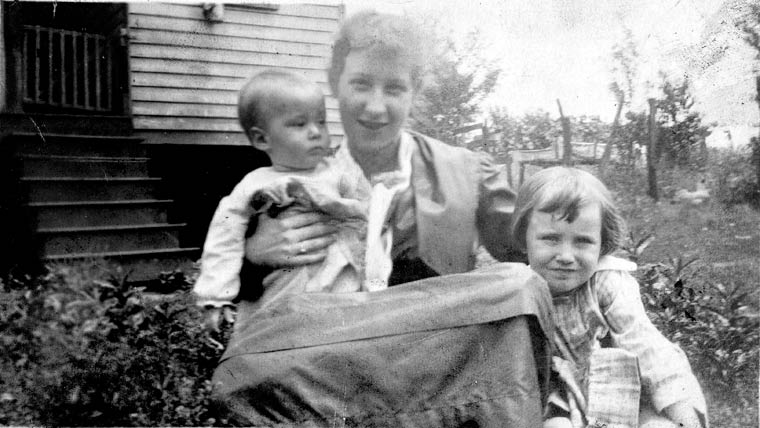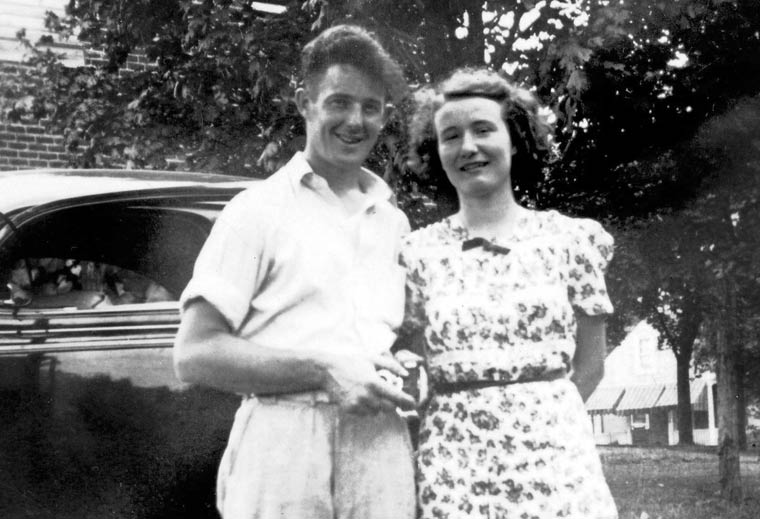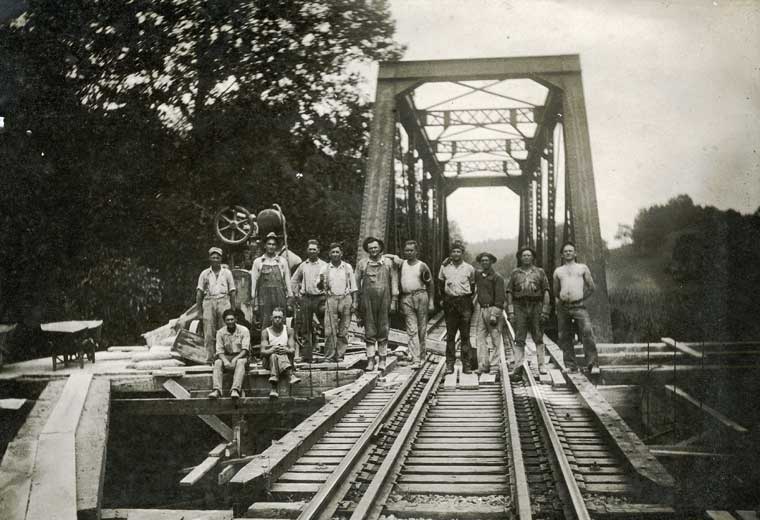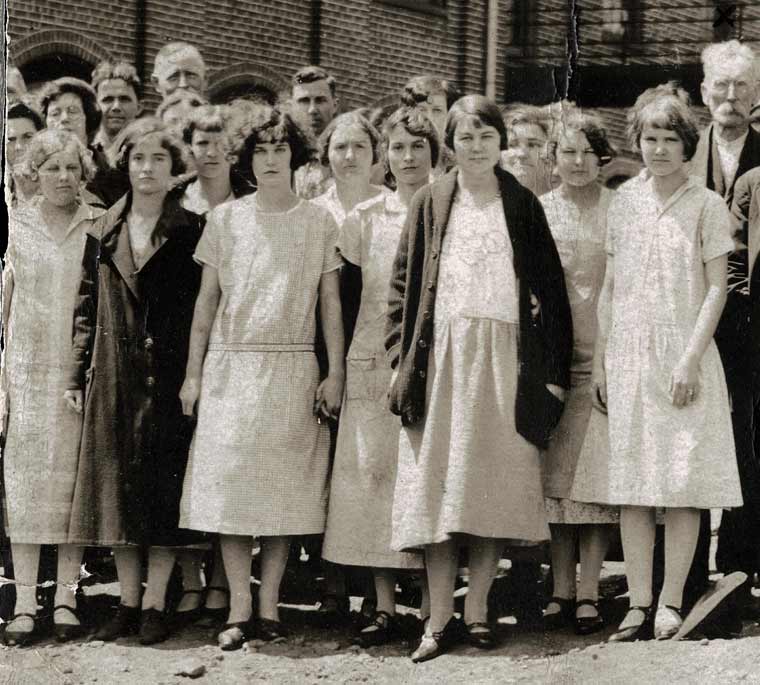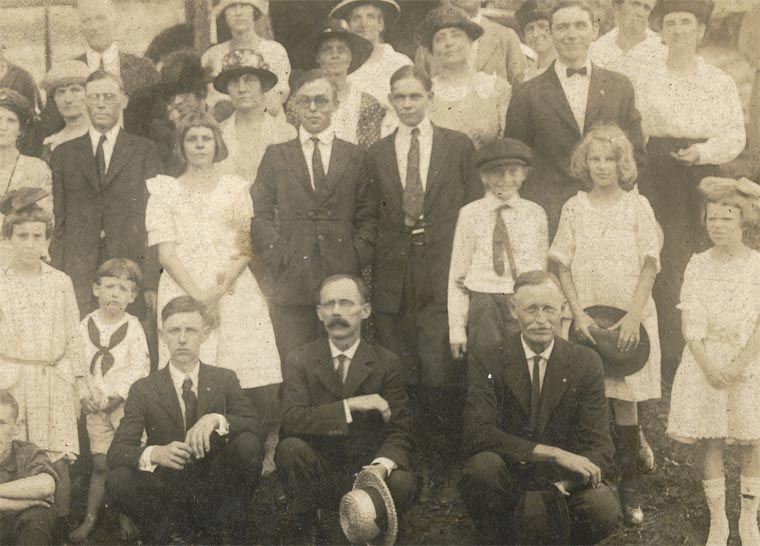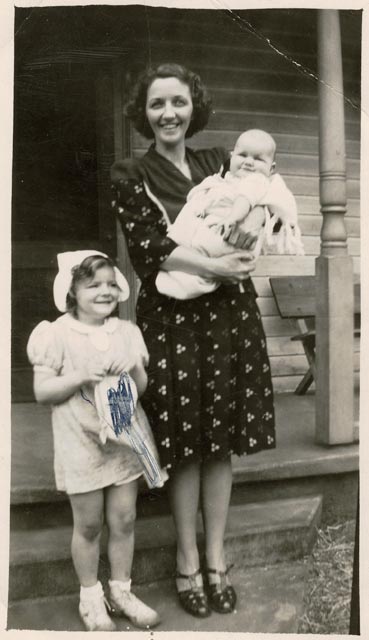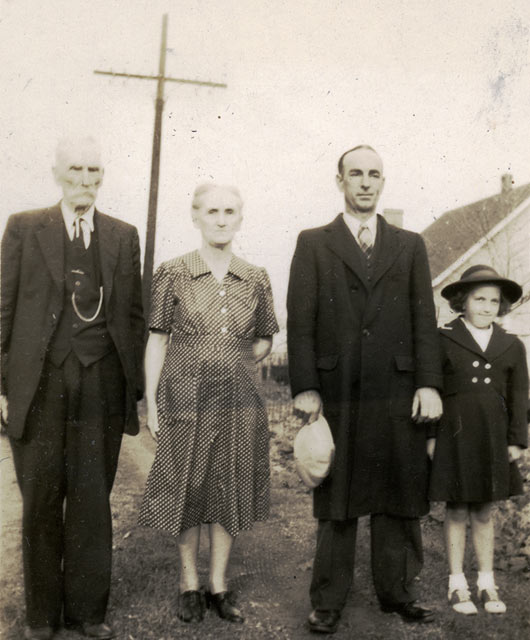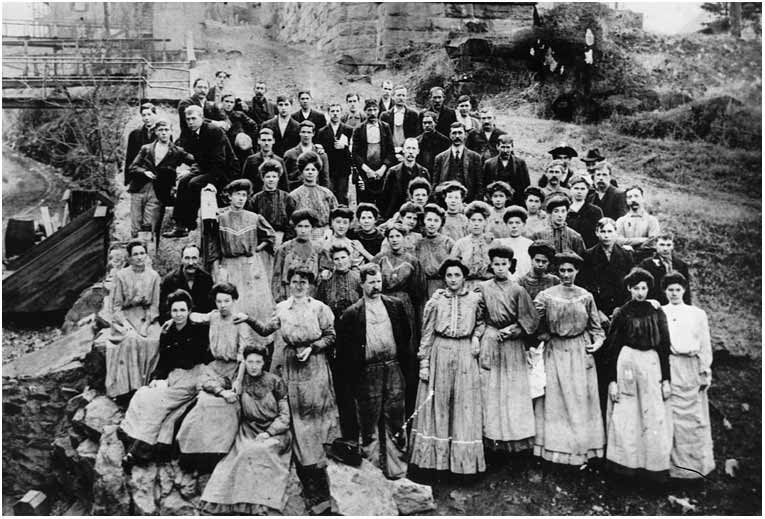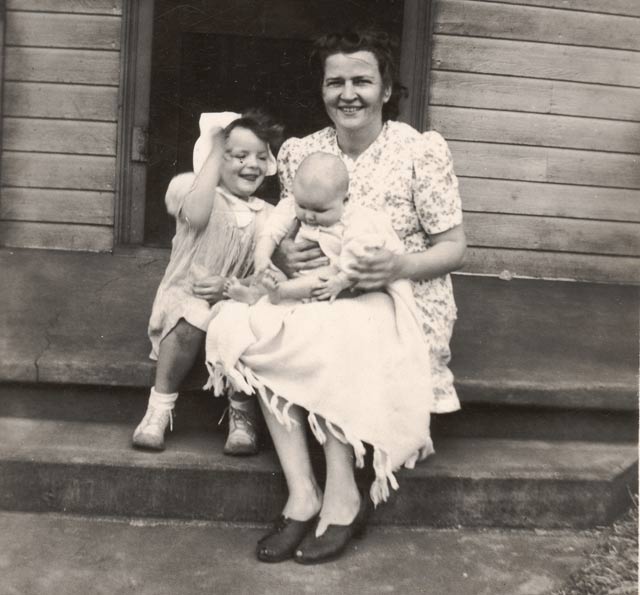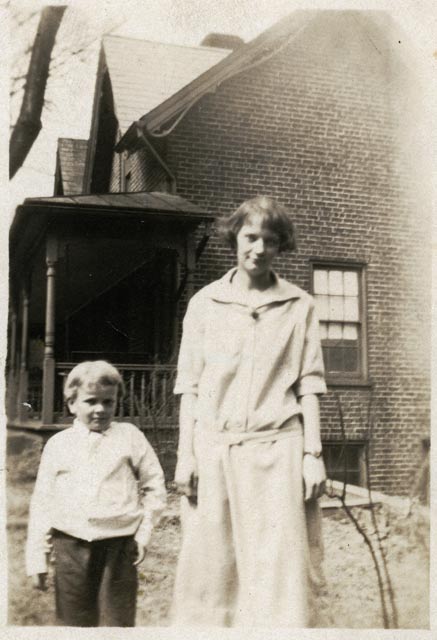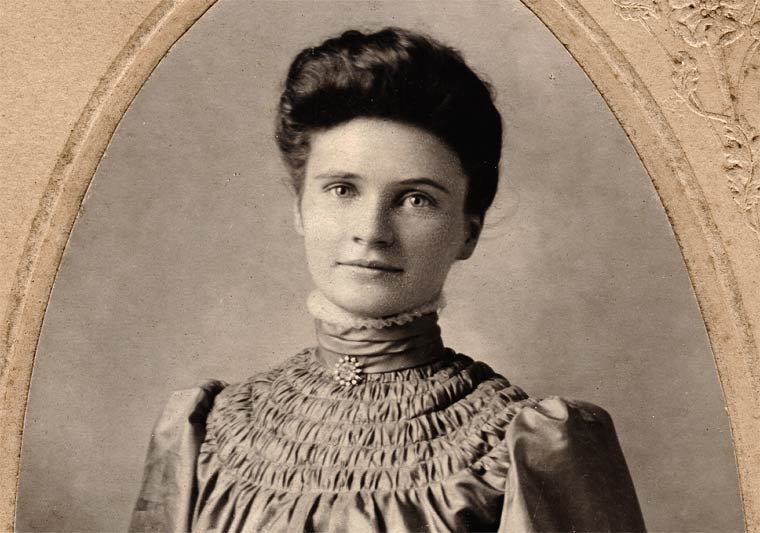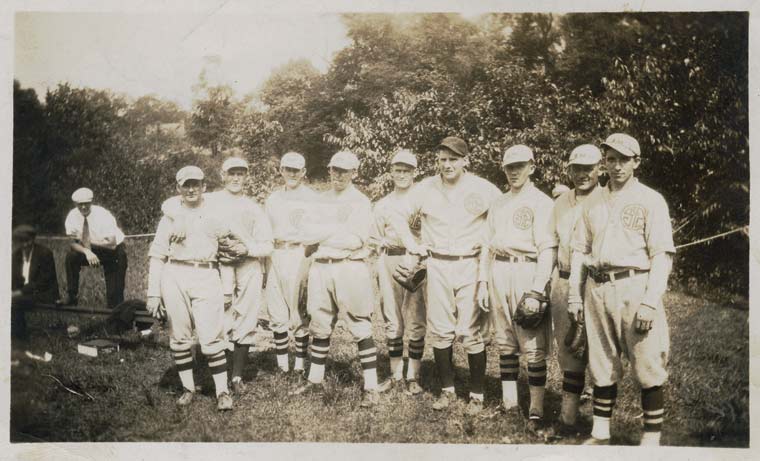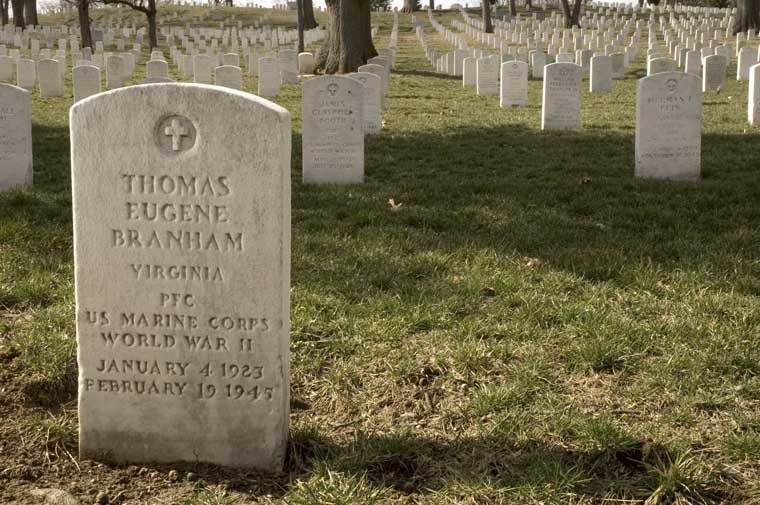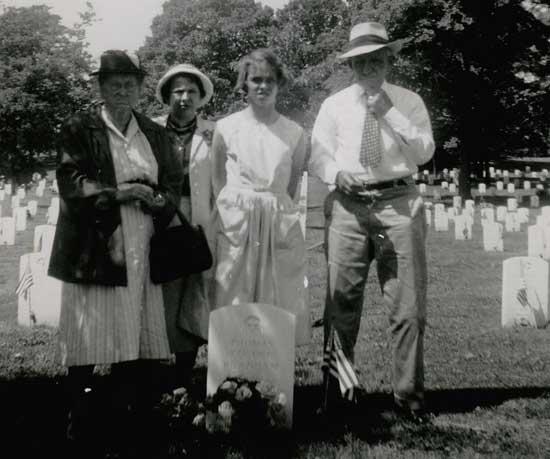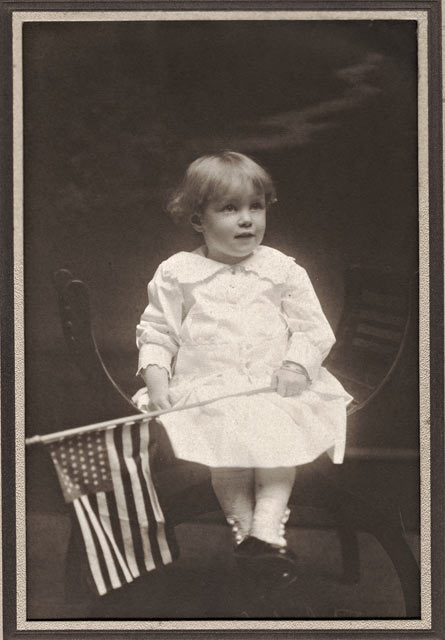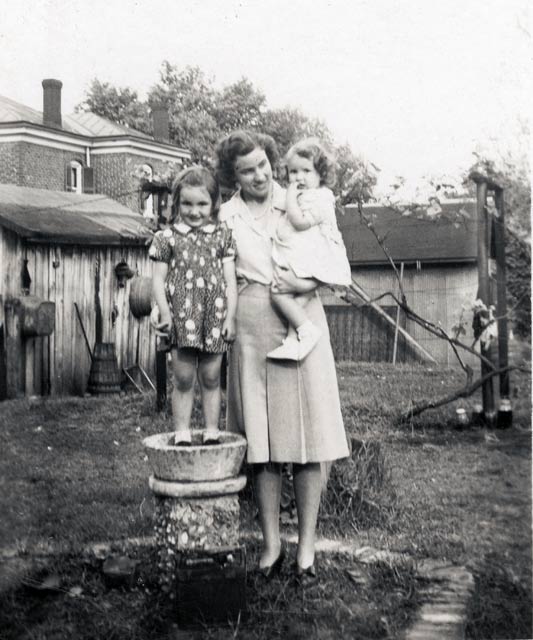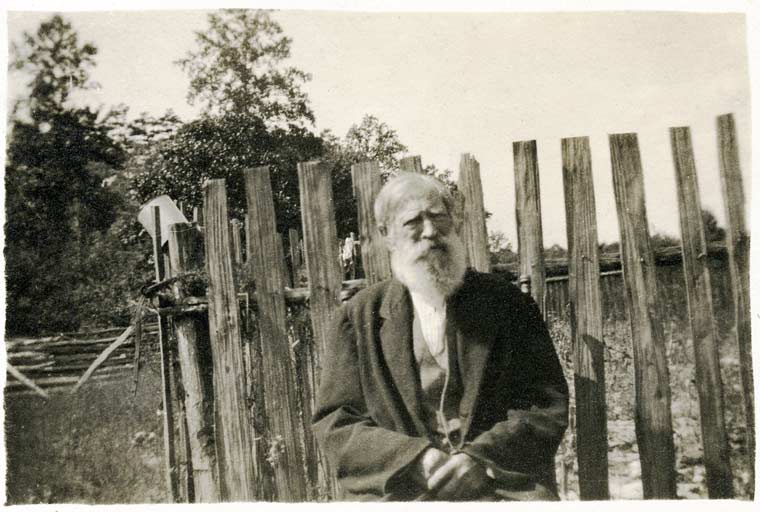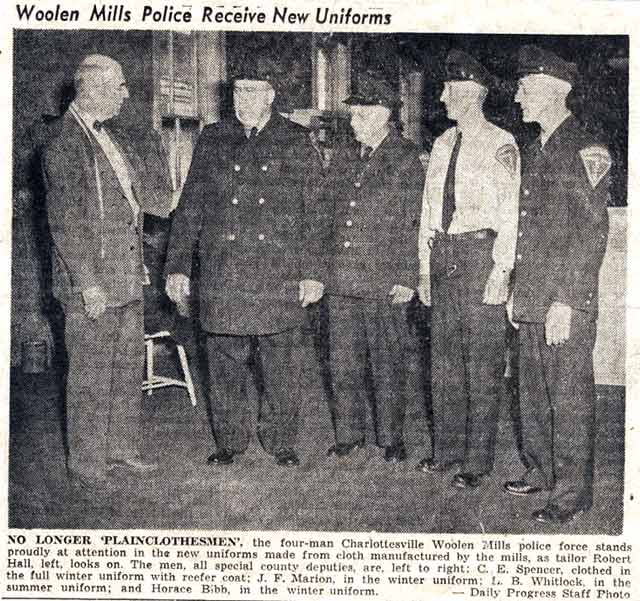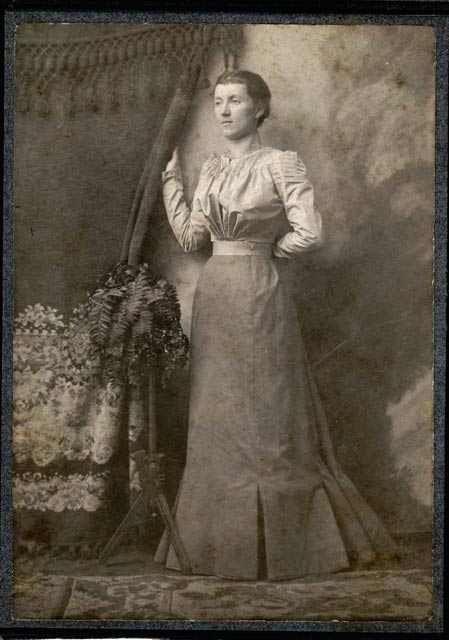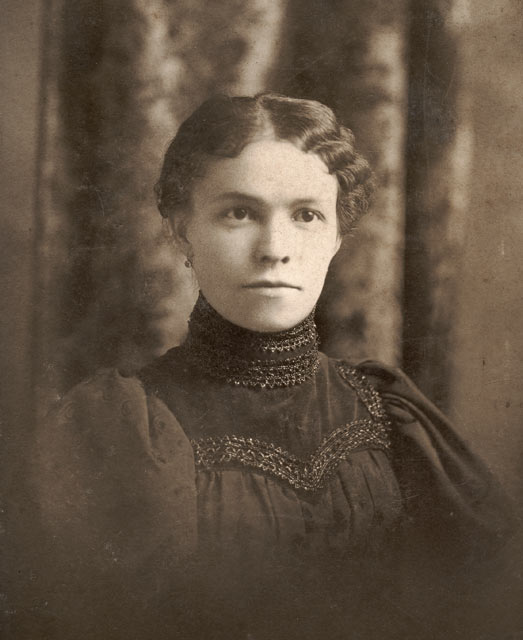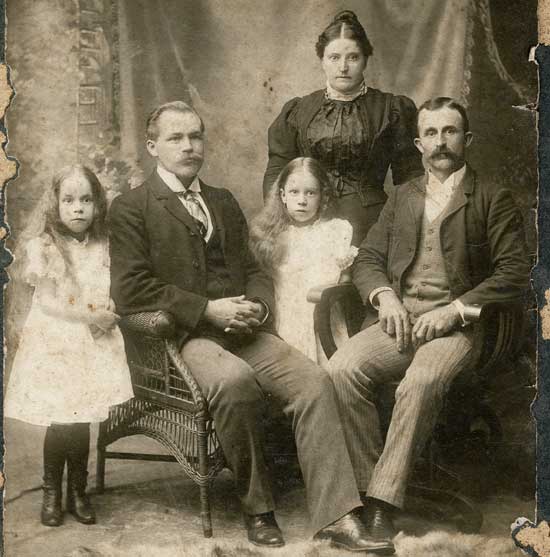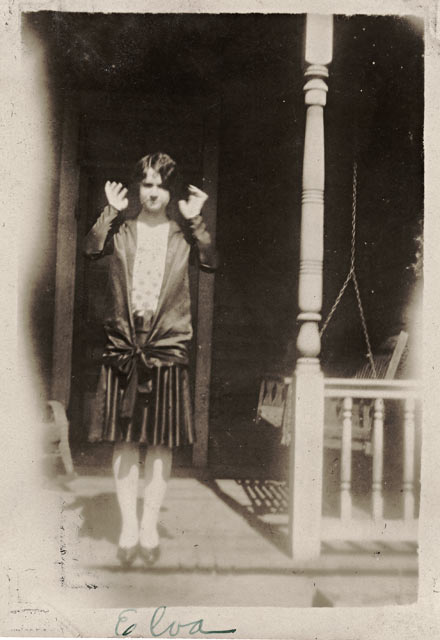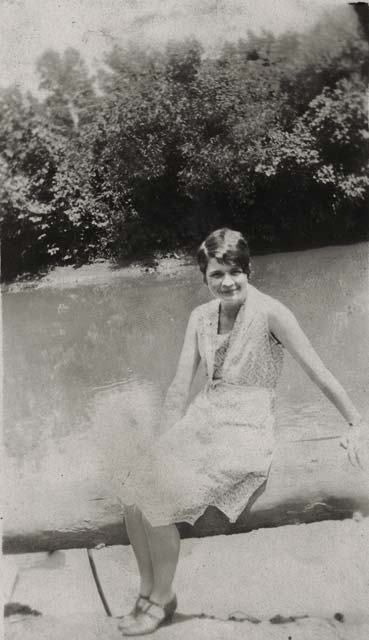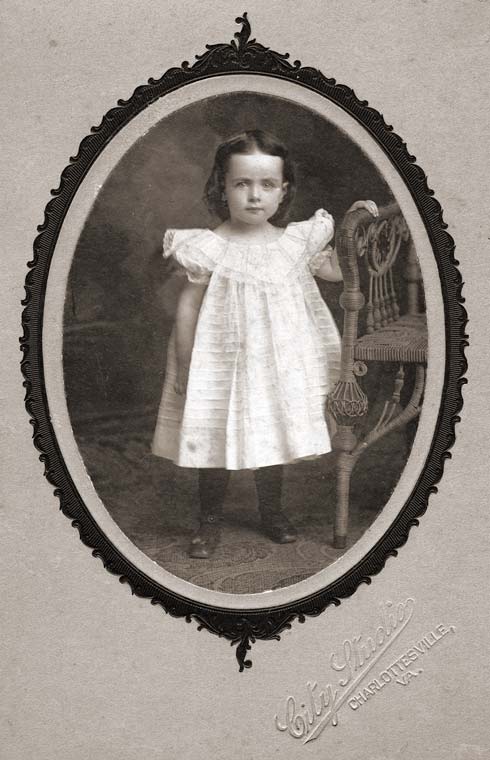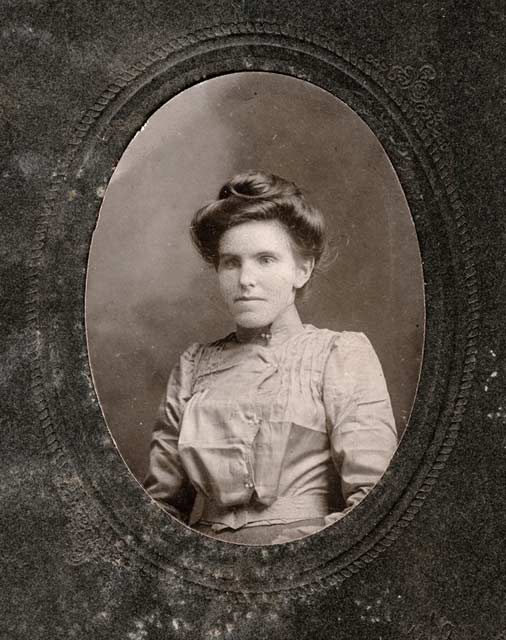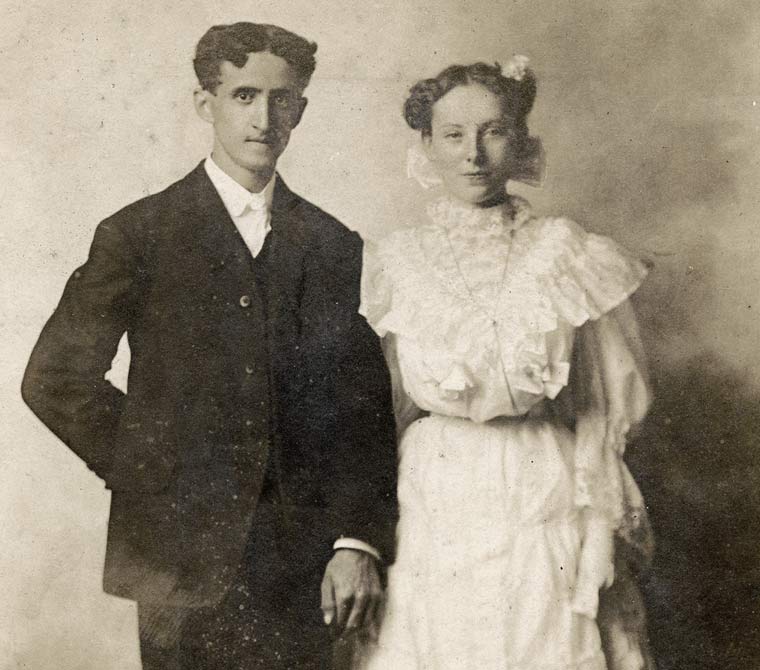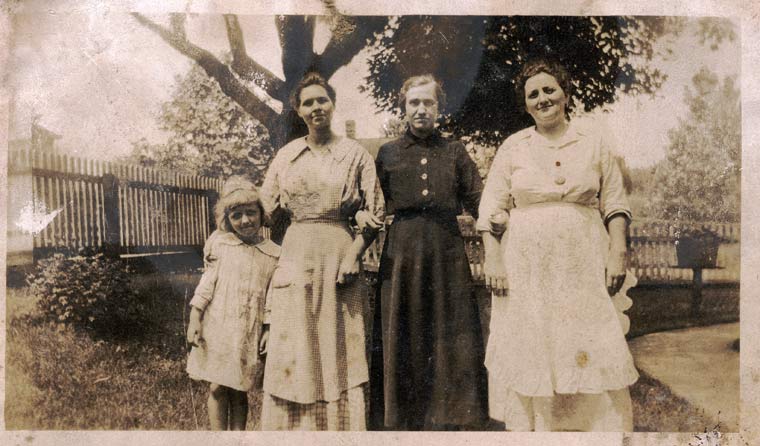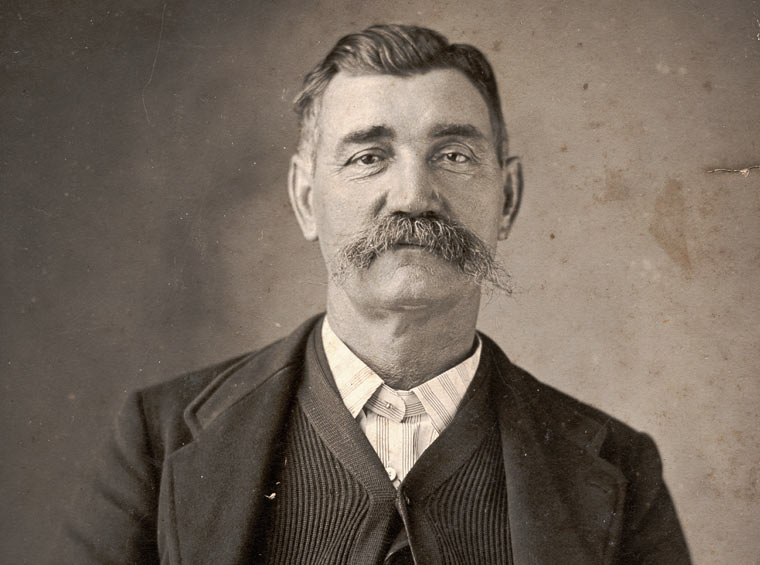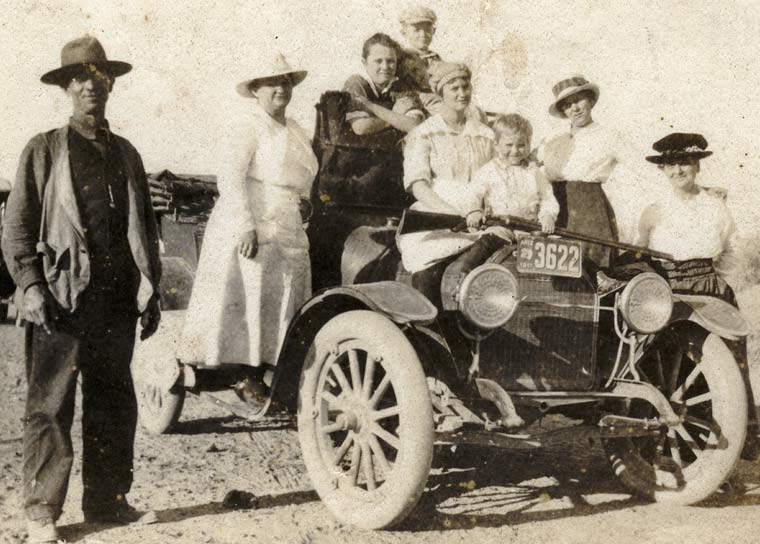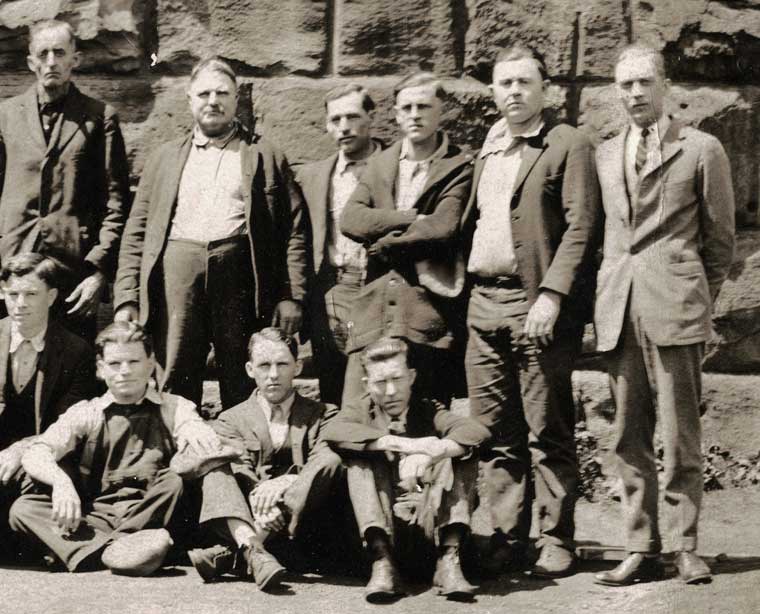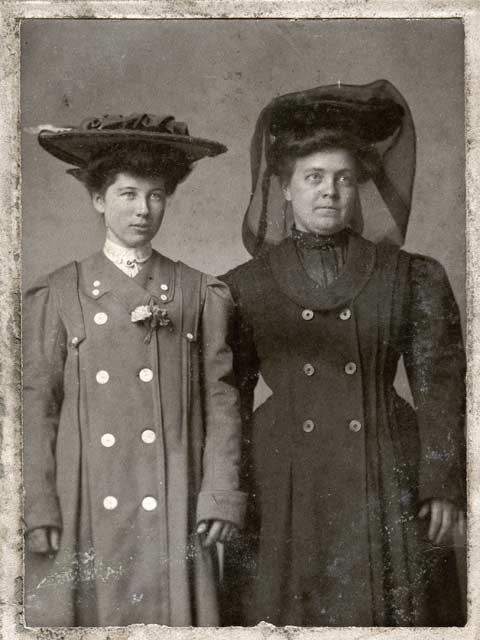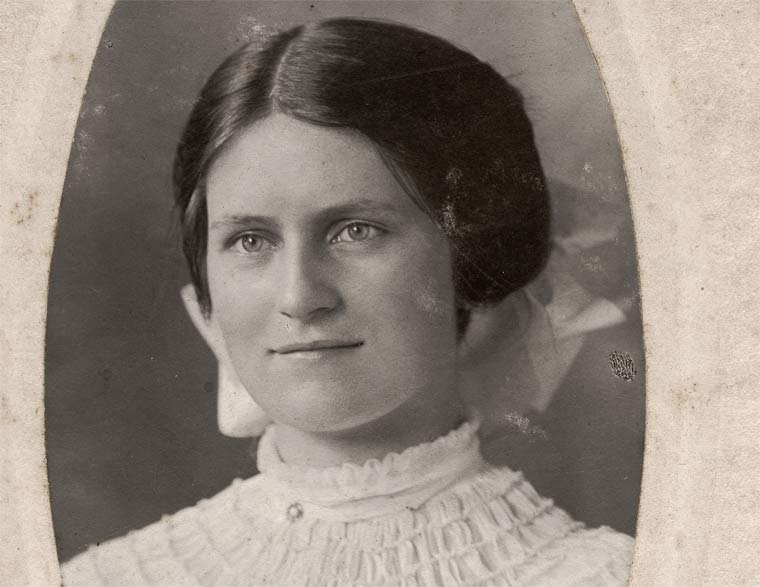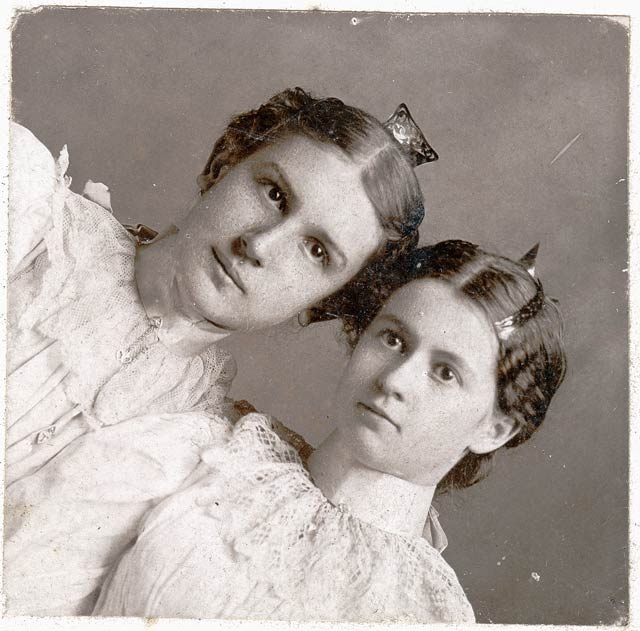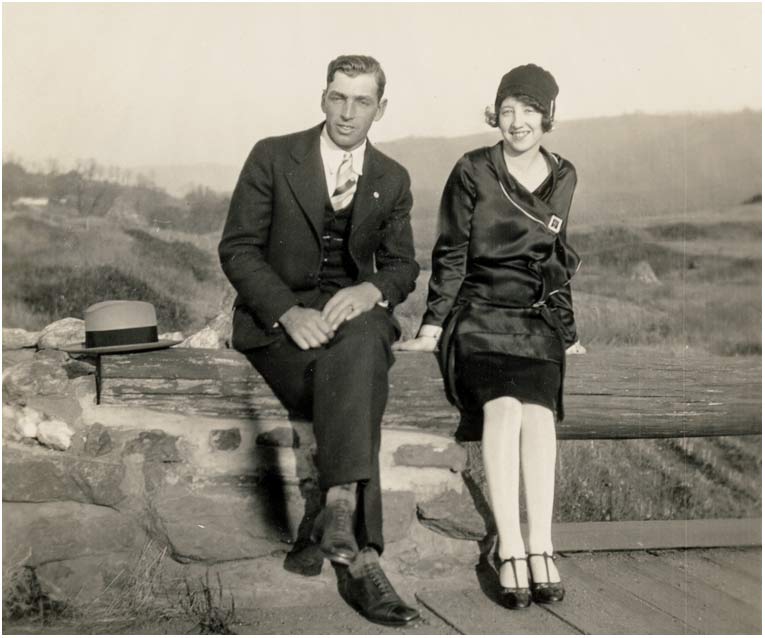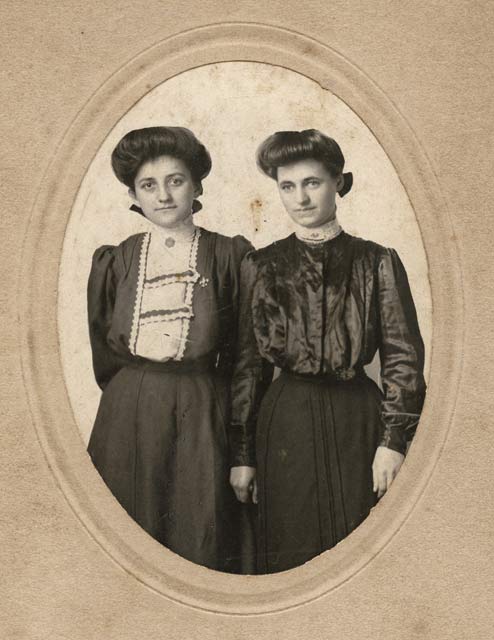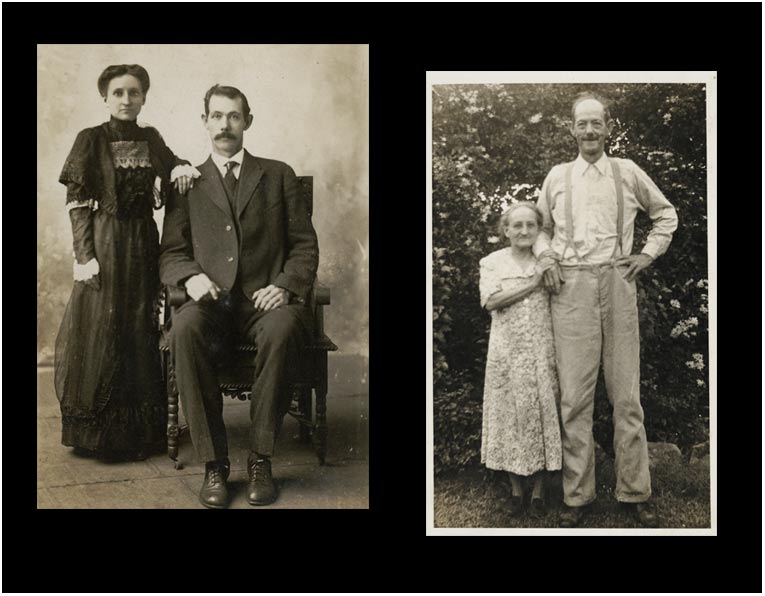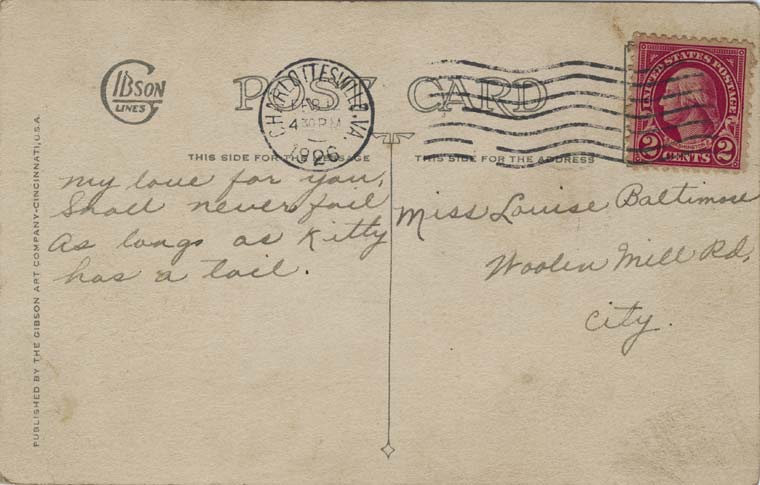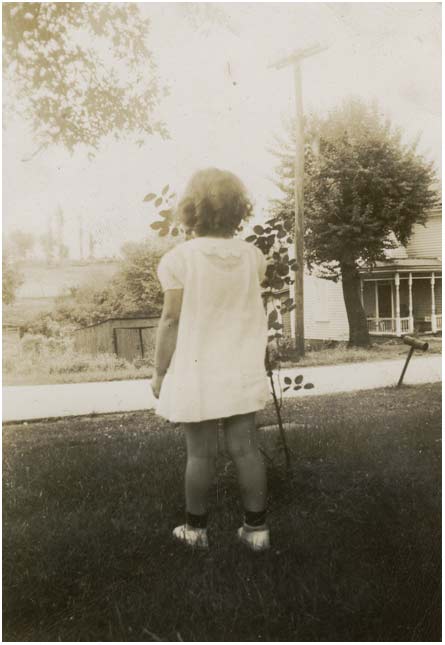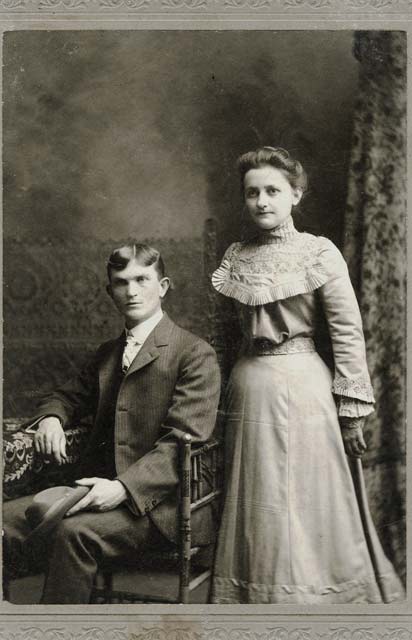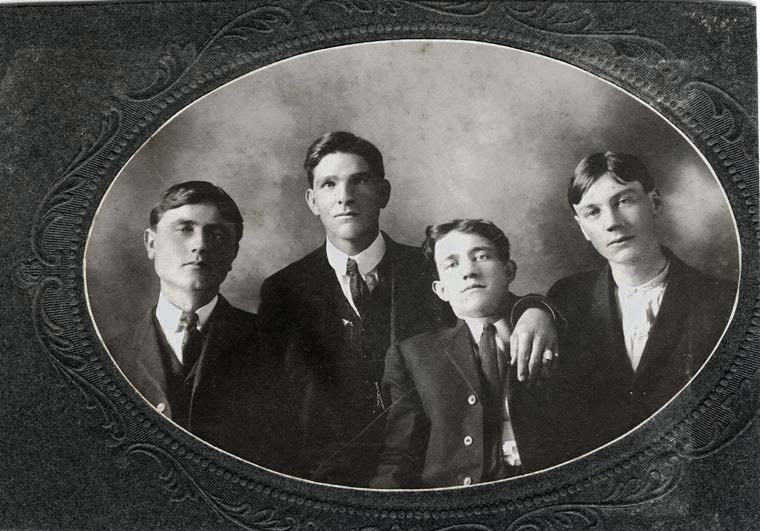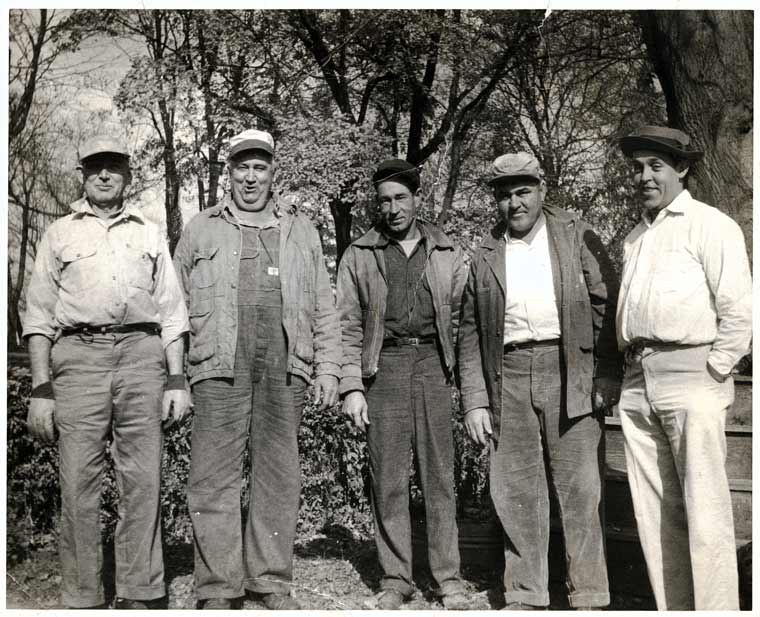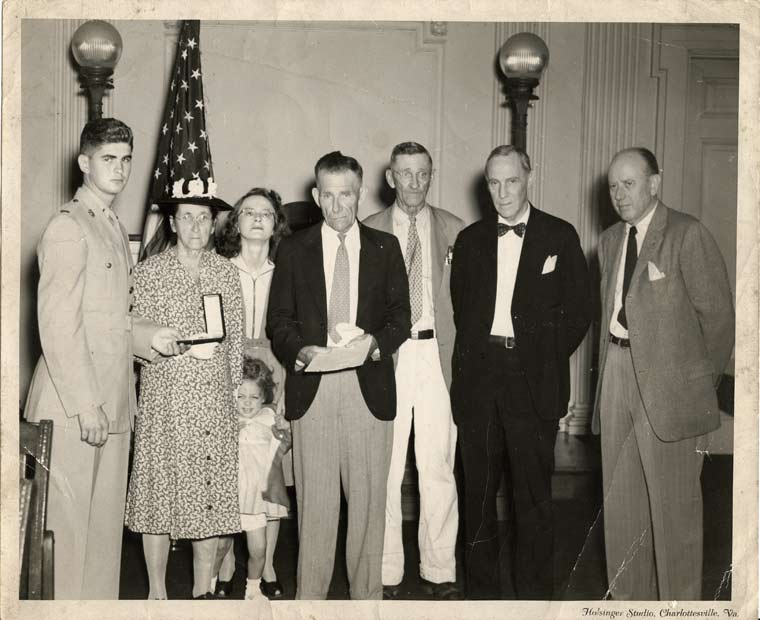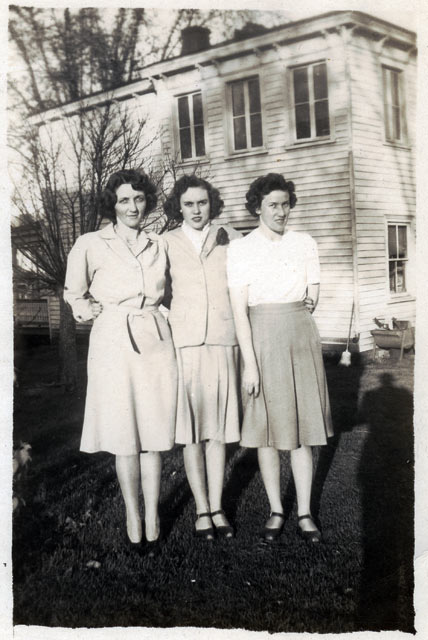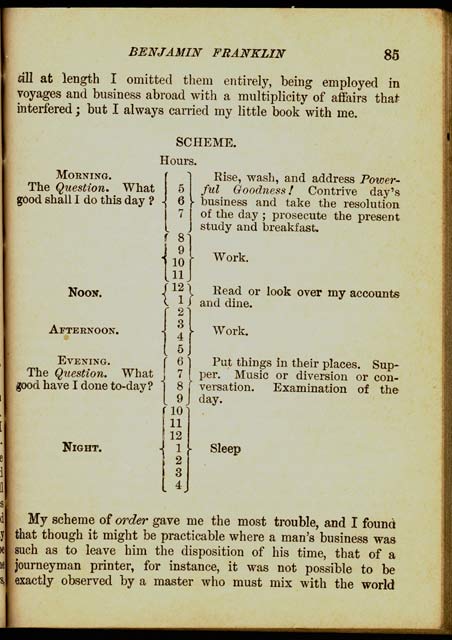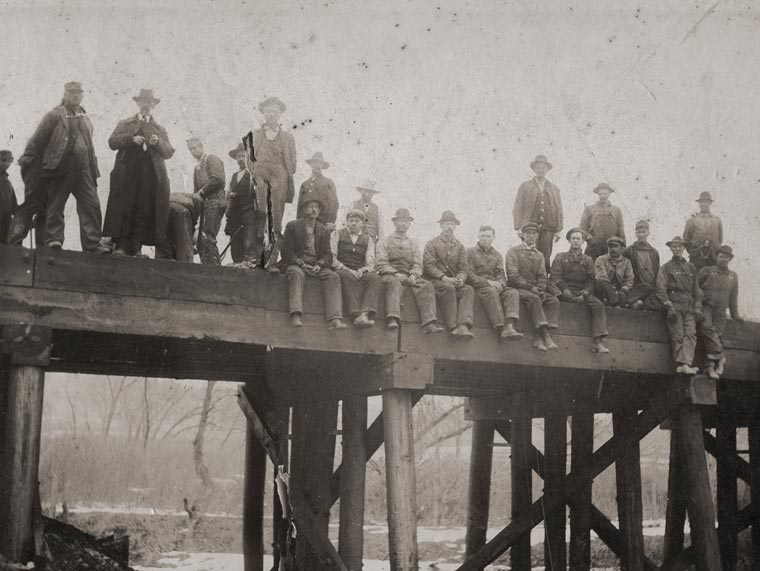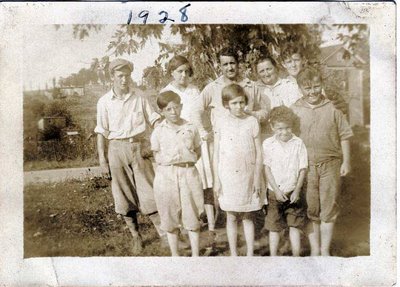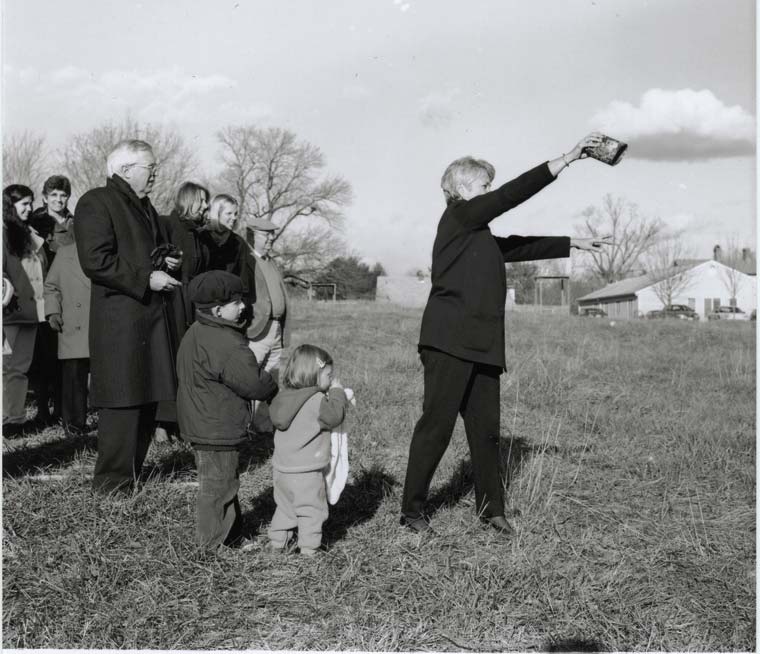
PHOTO BY MARY COCKERILLE
November 30, 1999- Lucile Branham Watson's ashes are scattered in the pasture behind the Timberlake-Branham house by her daughter, Jane Leitch. The boy behind Jane is Branham Talton, James L. Branhams great-great-grandson.
James and Bannie Branham had ten children, nine survived to adulthood.
Branham was a farmer, ultimately a farmer in the City. He died in 1970, seven years after his property was annexed into the City of Charlottesville.
The Branhams had a tradition of caring for one another and for others. James wife, Bannie, was a nurse as were their daughters Ruby and Mildred.
The Branhams son, Tom (Thomas Eugene Branham Pfc. USMCR) was killed in action on Iwo Jima, February 19, 1945. As a consequence of his sacrifice serving this country, the Branhams received funds from the government which helped facilitate the purchase of the site at 1512 East Market.
The Branhams were a close-knit family who loved their homeplace and used every bit of it, from Market Street to the C&O railroad track. Grand-daughter Dorothy Hesselton describes 1512:
1512 E. Market Street had 7 acres of land and was a little working farm. There were cows,chickens,pigs- a horse named Frank- My Grandfather plowed those fields with a plow and horse. My cousin Jane and I used to have to up pick potatoes and would hide in the corn rows to get out of work.They produced much of their own food,
they canned and preserved everything-DH. James Branham had a smokehouse, hog pen, barn, tool sheds, corn-crib, smoke-house, watering-trough and a chicken coop on site. They had two vegetable gardens, grew corn for the livestock in the field bordering the railroad tracks. The cows and Frank the plow-horse grazed in the front pasture toward the house.
Of the eight surviving children, four spent significant portions of their adult lives living under the same roof with their parents, sometimes being cared for, sometime being caretakers, always enjoying a family supper at the end of the day. The non-resident children visited with regularity, the grand-children had the run of the place and a chilled melon care of their grand-father every morning when in season. Says Hesselton-
It was a life that so few are fortunate to have... we were spoiled rotten.In addition to their devotion to each other, the Branhams were devoted to this property. It was the center of their family life.
In the 80s, Toms sisters Lucile and Mildred began to cast about for a means to recognize and preserve their homeplace. These girls, old ladies then, got the ball rolling with the Virginia Department of Historic Resources. In 1981 the property was added to the Virginia Landmarks register, in 1984 it was added to the National Register of Historic Places. In advance of her death, Lucille asked that her ashes be scattered in the pasture behind the house.
Of James and Bannies ten children, one survives, Lilian. Lilian worked, long ago, for the Charlottesville Woolen Mills.
Many have contributed to the preservation and stewardship of this unique property, they include:
Woolen Mills neighbors Tom and Laura Parmenter
Jeff ODell, Chairman of the Charlottesville Historic Landmarks Commission, 1989
Satyendra Singh Huja
Virginia Department of Historic Resources
Charlottesville Planning Commission
Charlottesville City Council
The Woolen Mills Neighborhood Association 1988-2007
Woolen Mills Road
October 18, 1993 Charlottesville City Council extended
"Individual Property Protection" to the seven acre farm, TMP-56.40.4
We thought that the entire seven acres would always be protected. 4/17/07- Dorothy Hesselton, daughter of Mary Ella Branham Frazier
Labels: Timberlake-Branham, WMRd people
